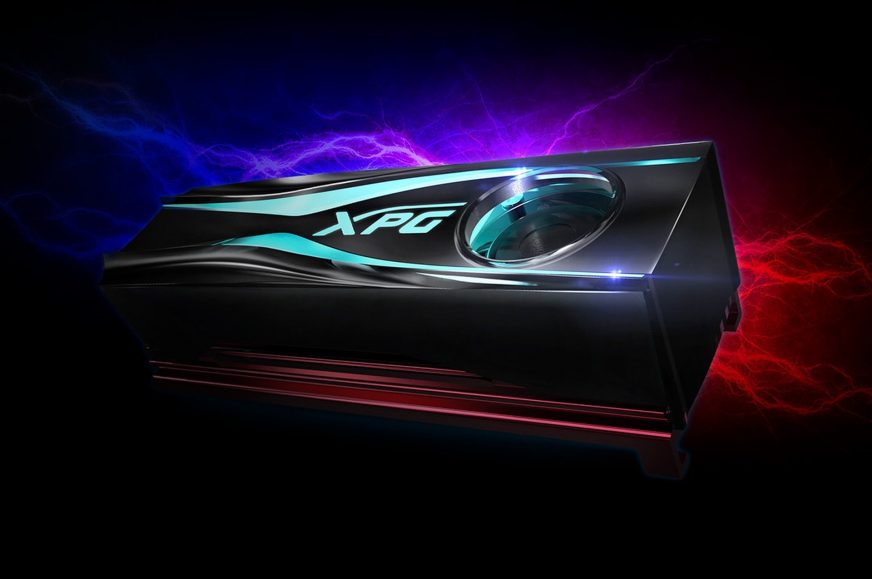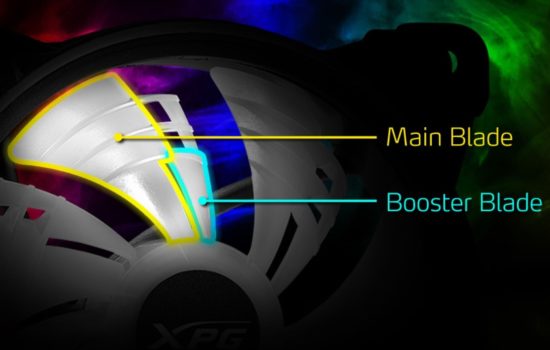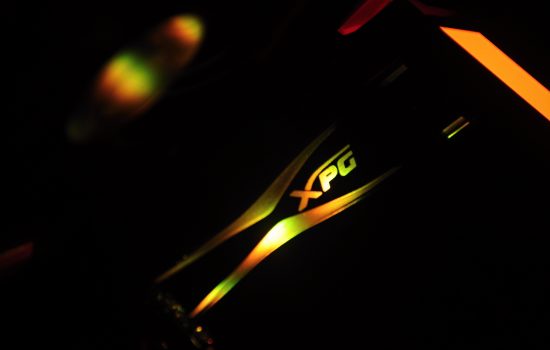Mini cooling of SSD with a 20mm fan
Efficient and quiet cooling in combination with small fans is usually just a utopic wish. But it looks like that they don’t give up easy. We just discussed Evga board with two 30mm fans which are supposed to cool the power supply circuit, and here appears another similar case – M.2 SSD active cooling.
The width of PCB of a SSD that fits into the M.2 slot is only 22 mm, and few would expect that it is enough for a fan. But it apparently is. Adata, SSD manufacturer, revealed an active cooler for M.2 – XPG Storm last week, which is a bit similar to reference coolers on graphics cards, just on a much smaller scale. It consists of an aluminum heatsink of a size that is typical for 80mm M.2 modules, but it has a cover that directs the airflow produced by a small fan – this really looks like a tiny graphics card cooling.
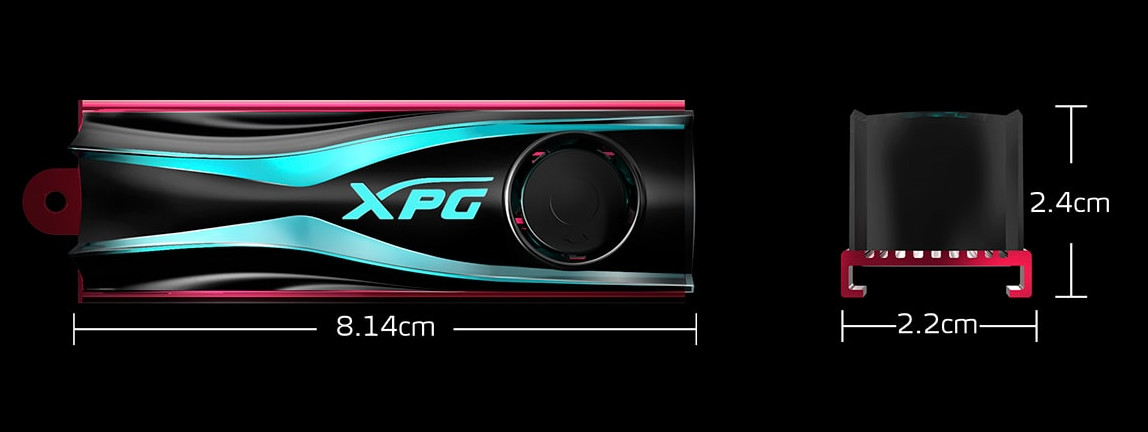
The fan should have a diameter of only 20 mm due to its size (length 81.5, width 24.55, height 23.1 mm), which is admirable in its own way. This is really small, although there are even smaller types (17 mm) from Sunon. But these measures double the problem of small fans. They have very limited space for the air intake which is also occupied by the rotor, and the blades have to be very short. The fan used by Adata runs at 16,500 rpm (but with a tolerance of ± 15%, so it could be even up to 19,000 rpm).
25 dBA with 1.9 CFM airflow
It is unclear what the type it is, according to AnandTech it is Sunon’s MF20100V1-10000-A99 which has a flow of 1.9 CFM at this speed. However, this is a 5V fan with a power input of 0.106 A, whereas Adata says that the fan is 12V/0.08A. It is possible that there is something inside that is converting the voltage from 12V to 5V. Adata also says that the cooler can be connected to power supply through molex or 3-pin connector on a board (but it seems that the third wire for speed monitoring is not used), which requires 12 V.
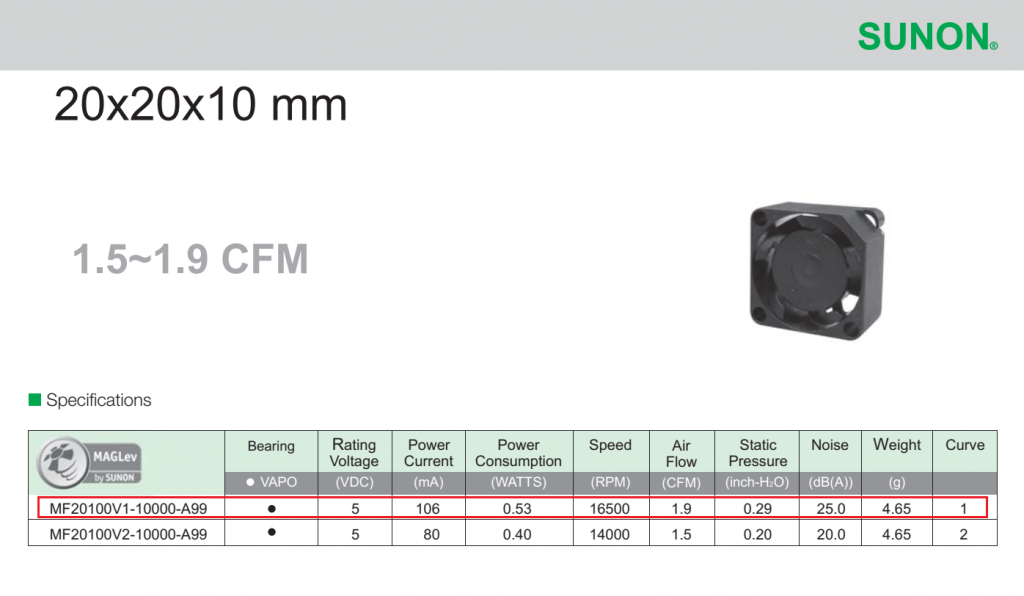
The MF20100V1-10000-A99 type is alleged to have the noise level of 25 dBA. It is not very low, although even worse numbers could be expected with this extreme speed. But the sound will likely have a higher frequency, which can be really unpleasant. Fans and bearings have improved a lot since the era of small fans in the previous decade, but a high-speed 20mm fan will probably be still an enemy of silent cooling.
In exchange, Adata promises that XPG Storm will lower SSD temperatures by at least 25%. Thanks to the guaranteed draft, they can actually be lower than with a range of passive coolers, but the question of course is whether it will pay off in return for increased overall noise. The noise probably was not a priority, and it was more about cooling performance and appearance. Current cooling fashion likes plastic covers that hide heatsinks underneath them. Adata XPG Storm has the disadvantage of noise, but it can offer configurable RGB LED (needs to be connected by a cable), which is not common for ordinary passive coolers.





